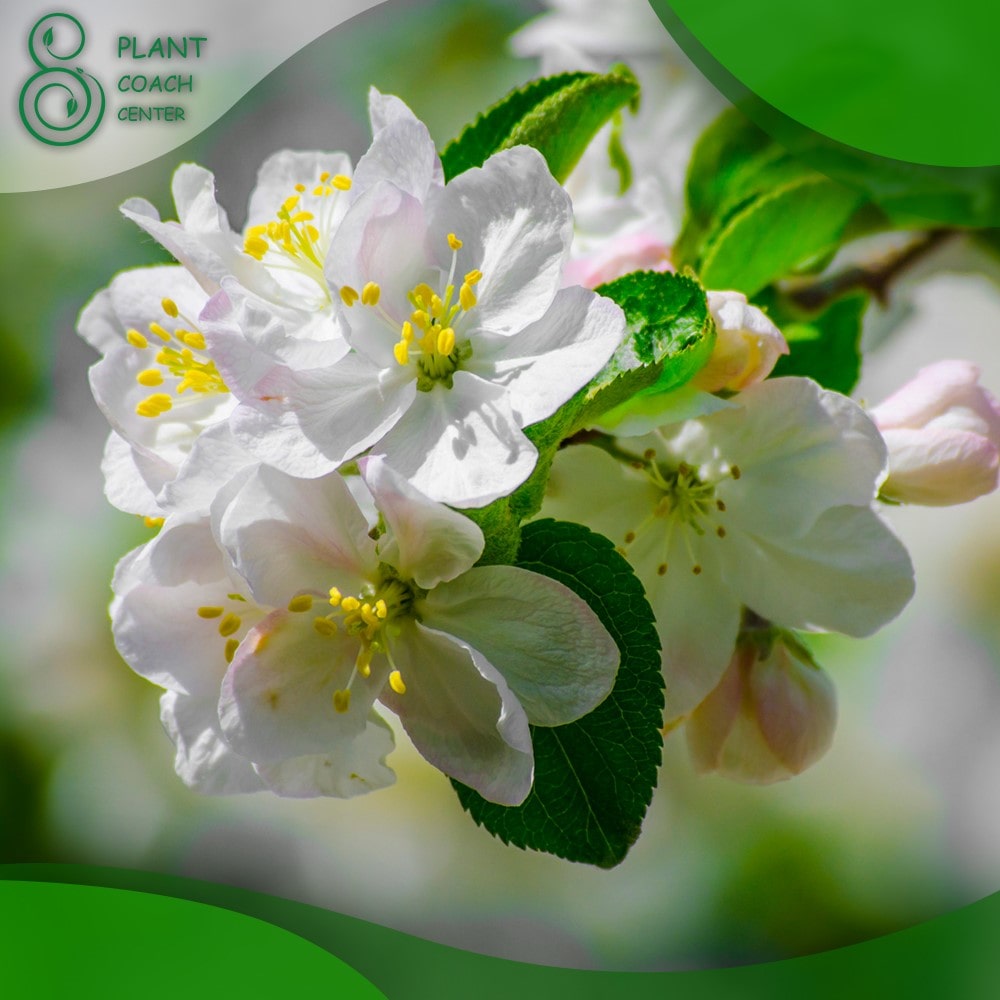When to Cut Back Jasmine
Jasmine plants are known for their beautiful and fragrant blossoms, making them popular among gardeners and plant enthusiasts. With their delicate flowers and vibrant foliage, jasmine plants can add a touch of elegance to any garden or indoor space. However, like any plant, proper care and maintenance are essential to ensure their health and vitality. One crucial aspect of jasmine plant care is pruning, which helps maintain the plant’s shape, promote healthy growth, and rejuvenate older plants.

Understanding Jasmine Growth and Pruning
Growth Cycle of Jasmine Plants
To understand when to cut back jasmine, it’s important to be familiar with the growth cycle of these plants. Jasmine plants typically experience active growth during spring and summer when they produce new shoots, leaves, and flowers. This phase is followed by a dormant period in late fall and winter when their growth slows significantly. Pruning during the appropriate time is crucial to avoid interfering with the plant’s natural growth patterns and to encourage healthy regrowth.
Importance of Pruning Jasmine
Pruning is a vital aspect of jasmine plant care for several reasons. First, it helps maintain the plant’s overall shape and size, preventing it from becoming overgrown and unruly. Regular pruning also encourages the production of new shoots, which results in a fuller and more compact plant.
Furthermore, pruning is essential for removing dead, damaged, or diseased branches, which helps improve the plant’s overall health and appearance. Proper pruning techniques can stimulate increased flowering and ensure better air circulation and sunlight penetration, leading to more robust growth.
Benefits of Proper Jasmine Pruning
When done correctly, pruning jasmine plants can provide numerous benefits:
- It helps control the plant’s size and shape, making fitting into different garden designs or indoor spaces easier. Pruning also promotes the development of strong, sturdy branches, preventing the plant from becoming leggy or weak.
- Removing dead or diseased branches reduces the risk of pests and diseases spreading throughout the plant.
- Regular pruning can extend the lifespan of the jasmine plant and contribute to its overall vigor and vitality.
Common Jasmine Pruning Mistakes
While pruning is crucial for jasmine plant care, it’s essential to avoid common mistakes that can harm the plant. One common mistake is over-pruning, where too much foliage and branches are removed, causing stress to the plant. Over-pruning can lead to stunted growth, reduced flowering, and even plant decline.
Another mistake is improper pruning cuts, such as leaving stubs or cutting too close to the main stem. These incorrect cuts can hinder the plant’s healing process, leaving it vulnerable to infections and diseases. To ensure successful pruning, following proper techniques and guidelines specific to jasmine plants is essential.
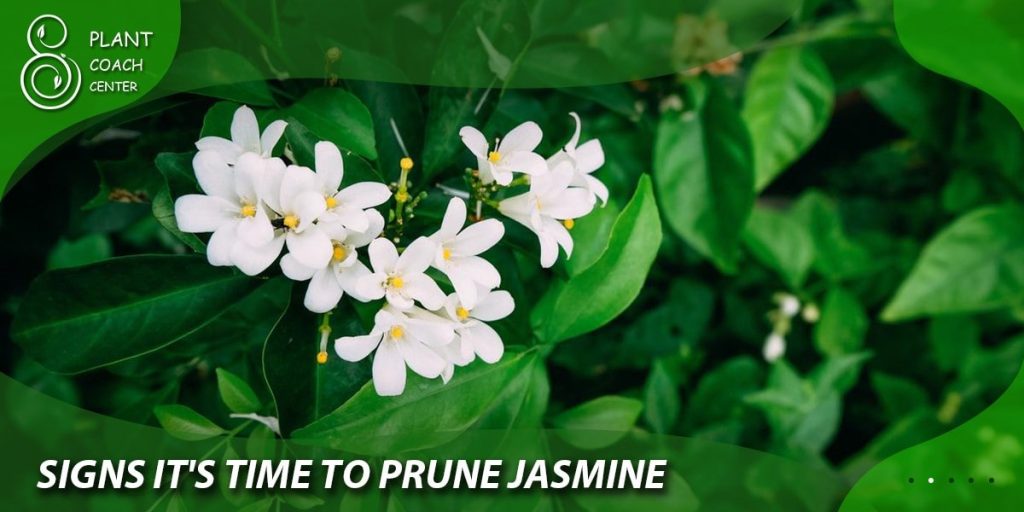
Signs It’s Time to Prune Jasmine
Recognizing when to cut back on jasmine is crucial for achieving the best results. Pruning at the right time ensures that you don’t interfere with the plant’s natural growth and flowering cycles. Here are some signs that indicate it’s time to prune your jasmine plant:
Recognizing Overgrown Jasmine
One of the most apparent signs that your jasmine plant needs pruning is when it becomes overgrown. Over time, jasmine plants can grow vigorously and start spreading in multiple directions. The plant may lose shape, with branches growing in all directions, making it look untidy and unappealing. Pruning helps maintain the plant’s desired shape and size, preventing it from overpowering the surrounding area.
Identifying Damaged or Diseased Jasmine
Pruning is essential for removing dead, damaged, or diseased branches from your jasmine plant. Dead or damaged branches can result from extreme weather conditions, pest infestations, or diseases. These branches detract from the plant’s appearance and can become a breeding ground for pests and pathogens. Regular inspection of your jasmine plant will help you identify any branches that need to be pruned to promote overall plant health.
Jasmine Pruning for Maintenance
Even if your jasmine plant is healthy and not visibly overgrown or damaged, regular pruning as part of maintenance is still beneficial. Maintenance pruning involves the selective removal of specific branches to keep the plant in its desired shape and size. It helps prevent the plant from becoming too dense, allowing better air circulation and sunlight penetration, which are crucial for healthy growth. Maintenance pruning also stimulates the production of new shoots, resulting in a more compact and bushier plant.
Factors to Consider Before Pruning Jasmine
Before grabbing your pruning shears, it’s important to consider a few factors that can influence the timing and extent of pruning your jasmine plant. Taking these factors into account will help ensure successful and optimal results:
Climate and Seasonal Considerations
Your area’s climate and seasonal conditions play a significant role in determining when to prune your jasmine plant. In general, it’s best to avoid pruning during extreme weather conditions such as freezing temperatures or heat waves. Pruning during these times can cause stress to the plant and impede its ability to recover. It’s advisable to schedule pruning when the weather is mild and stable, such as in early spring or late summer.
Evaluating Jasmine’s Health and Condition
Assessing your jasmine plant’s overall health and condition is crucial before pruning. Suppose your plant is experiencing health issues or stress, such as pest infestations, diseases, or drought. In that case, it’s best to address those problems before pruning. Pruning a stressed or unhealthy plant can further weaken it and hinder its ability to recover. Ensure your jasmine plant is in good health before proceeding with pruning.
Determining Pruning Goals
Before pruning, it’s essential to have clear goals in mind. Determine the specific outcomes you wish to achieve through pruning. For instance, you might want to reshape an overgrown jasmine plant, encourage more flowering, or maintain its current size and shape. A clear vision of your goals will guide you in making the right pruning decisions and techniques.
Safety Precautions for Jasmine Pruning
While pruning jasmine plants, it’s important to prioritize safety to avoid accidents and injuries. Here are some safety precautions to keep in mind:
- Wear gloves and goggles to shield your hands and eyes from thorns, debris, or potential hazards.
- Use sharp and clean pruning tools appropriate for the size and thickness of the branches you intend to cut.
- Ensure you have a stable and secure footing while pruning, especially when working on taller or climbing varieties of jasmine.
- Be cautious of nearby power lines or structures when pruning large jasmine plants or those growing close to buildings.
By considering these factors and taking necessary safety precautions, you’ll be well-prepared to prune your jasmine plants effectively. The next section delves into specific pruning techniques for different jasmine varieties.
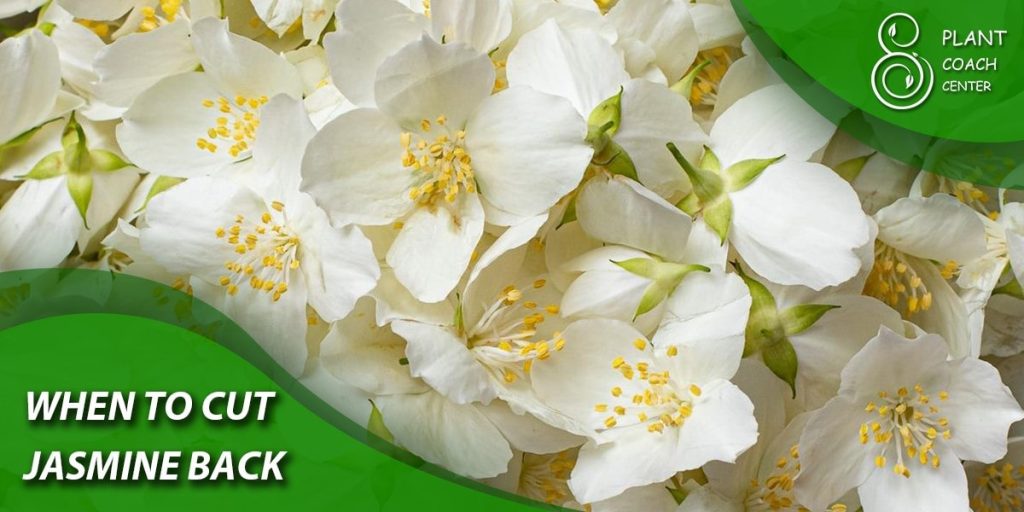
Pruning Techniques for Different Jasmine Varieties
Jasmine plants encompass various species and cultivars, each with its growth habits and pruning requirements. Understanding the specific pruning techniques for different jasmine varieties will ensure you prune your plants correctly and maximize their health and beauty. Let’s explore the pruning techniques for common jasmine species and climbing jasmine varieties:
Pruning Techniques for Common Jasmine Species
- Arabian Jasmine (Jasminum sambac): Arabian jasmine is a popular species known for its highly fragrant white flowers. Prune Arabian jasmine immediately after its blooming cycle ends to maintain its shape and promote abundant flowering. Remove any dead or damaged branches and excessively long or unruly shoots. Aim to maintain a balance between old and new growth for a healthier and more compact plant.
- Common Jasmine (Jasminum officinale): Common jasmine, also known as true jasmine, features delicate white flowers and is renowned for its captivating fragrance. Prune common jasmine in late winter or early spring before the new growth begins. Remove any dead or weak branches and those crossing or rubbing against each other. Pruning encourages the growth of new shoots, leading to increased flower production.
- Winter Jasmine (Jasminum nudiflorum): Winter jasmine is unique as it blooms in winter or early spring, producing vibrant yellow flowers on bare branches. Prune winter jasmine right after its flowering period, preferably in early spring. Remove dead or diseased branches and thin out crowded areas to improve air circulation. Winter jasmine can tolerate heavy pruning, making it ideal for rejuvenation pruning if necessary.
Pruning Techniques for Climbing Jasmine Varieties
- Carolina Jasmine (Gelsemium sempervirens): Carolina jasmine is a climbing vine that produces bright yellow trumpet-shaped flowers. Prune Carolina jasmine after its flowering season in late spring or early summer. Trim back any excessively long or tangled vines to maintain a neat appearance and prevent overgrowth. It’s important to note that Carolina jasmine blooms on old wood, so avoid severe pruning that may remove potential flower-bearing branches.
- Star Jasmine (Trachelospermum jasminoides): Star jasmine is a popular climbing vine with glossy, dark green leaves and fragrant white flowers. Prune star jasmine immediately after flowering in late spring or early summer. Trim back unruly or overgrown vines to manage the plant’s size and shape. Additionally, prune lightly throughout the year to encourage branching and a fuller growth habit.
Remember to use sharp and clean pruning tools when pruning jasmine, regardless of the variety. Make clean cuts just above a leaf node or bud, sloping the cut away from the bud to prevent water accumulation. Avoid cutting too close to the main stem, slowing the healing process. Proper pruning techniques, tailored to each jasmine variety, will help maintain plant health, promote flowering, and ensure an aesthetically pleasing appearance.
Step-by-Step Guide to Pruning Jasmine
Pruning jasmine requires careful consideration and proper technique to ensure the best results. Follow this step-by-step guide to effectively prune your jasmine plants:
Step 1: Gather the Necessary Tools and Equipment
Before you begin pruning, gather the appropriate tools and equipment. You will need sharp pruning shears or secateurs for smaller branches, loppers for thicker branches, and possibly a pruning saw for larger cuts. Ensure your tools are clean, sharp, and in good condition to make precise and clean cuts. Additionally, it’s a good idea to have a pair of gloves, safety goggles, and a sturdy ladder if needed for pruning taller jasmine plants.
Step 2: Choose the Right Timing
Timing is crucial when it comes to pruning jasmine. As mentioned earlier, the best time to prune jasmine is generally after its flowering season and during the plant’s dormant period. This timing varies depending on the jasmine variety and your specific climate. Aim to prune in late winter or early spring before new growth emerges. This allows the plant to recover from pruning and encourages healthy regrowth.
Step 3: Assess the Plant’s Structure and Growth
Before you start pruning:
- Take a moment to assess the structure and growth of your jasmine plant.
- Identify any dead, damaged, or diseased branches that need to be removed.
- Look for crossing branches or those growing inward, hindering proper air circulation and sunlight penetration.
- Consider the desired shape and size of your jasmine plant. This assessment will guide your pruning decisions and help you achieve your desired outcome.
Step 4: Remove Dead, Damaged, or Diseased Branches
Begin pruning by removing any dead, damaged, or diseased branches. Make clean cuts just above a healthy bud or leaf node. Remove the entire branch back to its origin point, ensuring no stubs are left behind. This helps prevent the entry of pests and diseases and promotes the plant’s overall health.
Step 5: Thin Out Overcrowded Areas
Next, thin out overcrowded areas to improve plant air circulation and sunlight penetration. Look for branches crossing, rubbing against each other, or growing inwards. Remove these branches selectively to open up the plant’s structure. Aim for an open and airy growth habit, which allows light and air to reach all parts of the plant and reduces the risk of pest and disease issues.
Step 6: Shape the Plant
If you want to reshape your jasmine plant or maintain a particular size, shape, or form:
- Proceed with shaping cuts.
- Trim back the branches to achieve the desired shape, considering the natural growth habit of the specific jasmine variety you are pruning.
- Make cuts just above a bud or leaf node, sloping the cut away from the bud to promote water runoff and prevent water accumulation.
Step 7: Step Back and Assess Your Pruning Work
After completing the pruning:
- Step back and assess your work.
- Ensure that the plant has a balanced and visually appealing appearance.
- Check for any areas that require further adjustments or fine-tuning.
This is also an opportunity to admire the rejuvenated look of your jasmine plant and anticipate the healthy growth that will follow.
Step 8: Dispose of Pruned Material Properly
Properly dispose of the pruned branches and plant material. Collect the cuttings and discard them in compost or green waste bins. Do not leave the pruned material around; it may attract pests or diseases. Keeping a clean and tidy pruning area contributes to your garden’s overall health and hygiene.
Following these step-by-step instructions will help you prune your jasmine plants effectively. Remember to adjust the pruning techniques based on the specific jasmine variety you are working with. In the next section, we will explore aftercare and maintenance tips to ensure your pruned jasmine plants’ continued health and vitality.
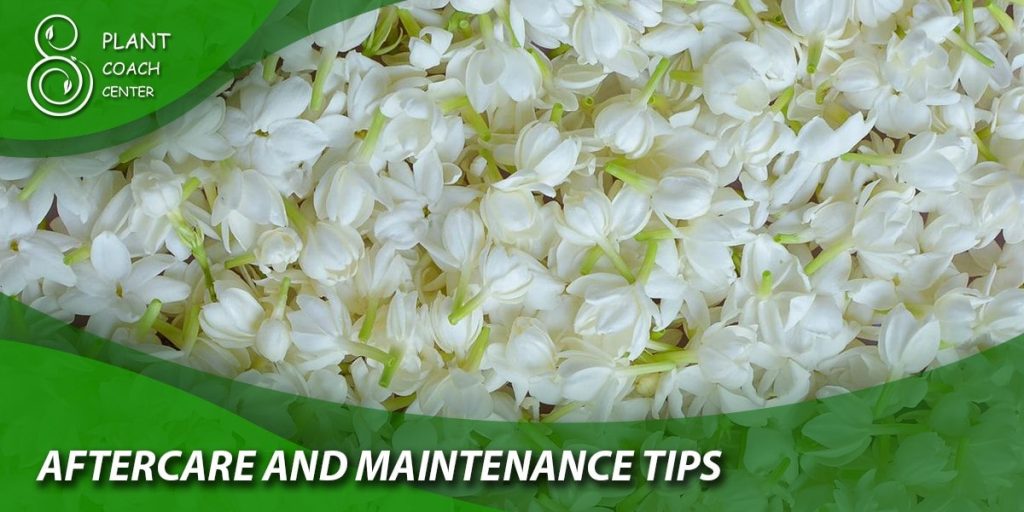
Aftercare and Maintenance Tips
After pruning your jasmine plants, proper aftercare and maintenance are essential to support their health and promote vigorous growth. Here are some important tips to follow:
Proper Disposal of Pruned Jasmine Branches
Once you have finished pruning, ensure you dispose of the pruned jasmine branches properly. Collect the cuttings and either compost them or dispose of them in green waste bins, following local waste management guidelines. Proper disposal helps prevent the spread of diseases and pests that may be present on the pruned material.
Jasmine Plant Nutrition and Fertilization
To support your pruned jasmine plants’ regrowth and overall health:
- Provide them with proper nutrition.
- Apply a balanced, slow-release fertilizer formulated for flowering plants according to the manufacturer’s instructions. This will help replenish nutrients in the soil and promote healthy foliage and abundant flowering.
- Consider using organic fertilizers for a more sustainable and environmentally friendly approach.
Watering and Mulching Guidelines
Maintain appropriate watering practices to keep your pruned jasmine plants adequately hydrated. Water deeply and thoroughly, allowing the soil to dry slightly between watering sessions. Avoid overwatering, as excessive moisture can lead to root rot and other problems. Applying a layer of organic mulch around the base of the plants can help conserve moisture, regulate soil temperature, and suppress weed growth.
Monitoring Jasmine’s Growth and Regrowth
Regularly monitor the growth and regrowth of your pruned jasmine plants. Observe the development of new shoots and leaves and the formation of flower buds. Pay attention to any signs of stress, such as wilting or yellowing leaves, and take appropriate action if necessary. Stay vigilant for pest infestations or diseases and address them promptly to prevent further damage.
Pruning as Part of Ongoing Maintenance
Remember that pruning is ongoing and should be incorporated into your regular maintenance routine. Regularly inspect your jasmine plants for new growth that requires shaping or thinning. Prune selectively to maintain the plant’s desired size, shape, and overall health. Regular pruning also promotes the continuous production of new shoots and flowers, ensuring the longevity and vibrancy of your jasmine plants.
Following these aftercare and maintenance tips will provide the necessary support and care for your pruned jasmine plants. Proper nutrition, watering, monitoring, and ongoing pruning will help maintain their health, vigor, and visual appeal.
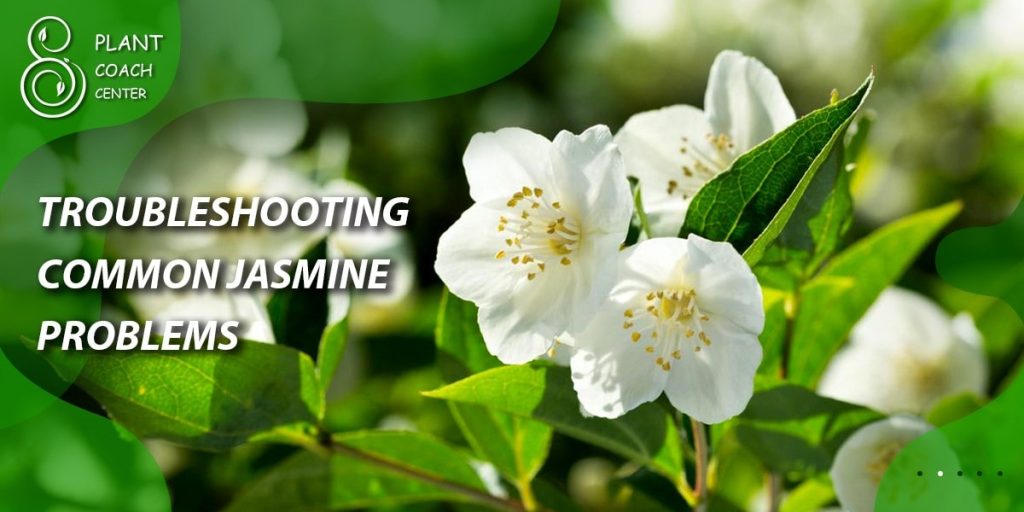
Troubleshooting Common Jasmine Problems
Like any other plant, Jasmine plants can encounter various problems that affect their growth and overall health. Here are some common issues that jasmine plants may face and troubleshooting tips to help you overcome them:
Pests and Diseases Affecting Jasmine
- Aphids: Aphids are tiny insects that feed on the sap of jasmine plants, causing distorted growth and sticky residue on leaves. Control aphids by spraying a strong stream of water to dislodge them or using insecticidal soap or neem oil.
- Whiteflies: Whiteflies are small, winged insects that cluster on the undersides of jasmine leaves, sucking sap and causing leaf yellowing and wilting. Control whiteflies using insecticidal soap, neem oil, or yellow sticky traps.
- Powdery Mildew: Powdery mildew appears as a white, powdery coating on leaves and stems, often caused by humid conditions. Improve air circulation around the plant and avoid overhead watering. Treat severe cases with a fungicide labeled for powdery mildew control.
- Root Rot: Excessive moisture or poorly drained soil can lead to root rot in jasmine plants, resulting in wilting, yellowing leaves, and overall decline. Improve soil drainage and adjust watering practices to prevent waterlogged conditions. If root rot is severe, consider replacing the affected plant.
Yellowing Leaves and Leaf Drop
- Nutrient Deficiency Yellowing leaves can indicate nutrient deficiencies, such as nitrogen, iron, or magnesium. Apply a balanced, slow-release fertilizer or specific micronutrient supplements as recommended for jasmine plants.
- Overwatering or Underwatering: Improper watering practices can cause yellowing leaves and leaf drops. Ensure you water your jasmine plants appropriately, allowing the soil to dry slightly between watering sessions.
- Environmental Stress: Exposure to extreme temperatures, excessive sunlight, or drafts can cause stress and lead to yellowing leaves. Provide your jasmine plants with appropriate light and temperature conditions, and protect them from harsh environmental factors.
Stunted Growth and Poor Flowering
- Insufficient Sunlight: Jasmine plants require adequate sunlight to thrive and produce abundant flowers. Ensure your jasmine plants receive at least 6 hours of direct sunlight daily. Place them near a south-facing window or provide supplemental grow lights if they are grown indoors.
- Improper Pruning: Incorrect pruning techniques, such as over-pruning or pruning at the wrong time, can result in stunted growth and reduced flowering. Follow proper pruning guidelines and timing specific to your jasmine variety.
- Lack of Nutrients: Inadequate nutrition can lead to stunted growth and poor flowering. Ensure your jasmine plants receive sufficient nutrients through regular fertilization using a balanced, slow-release fertilizer.
- Age of the Plant: Some jasmine varieties may take a few years to mature and produce abundant flowers. Be patient and provide consistent care to encourage the plant’s growth and eventual flowering.
Identifying and addressing these common problems can help your jasmine plants overcome challenges and thrive. Regular monitoring, proper care, and prompt action will contribute to the health and beauty of your jasmine plants.
Conclusion
In this comprehensive guide, we have explored the importance of pruning jasmine plants and provided valuable insights into when and how to cut back jasmine for optimal growth and health. By following the guidelines and techniques discussed, you can maintain your jasmine plants’ shape, promote healthy growth, and rejuvenate older plants.
We began by understanding the growth cycle of jasmine plants and the significance of pruning in maintaining their shape and size. Pruning allows for better air circulation, sunlight penetration, and removing dead or damaged branches, promoting overall plant health and appearance. We also highlighted common pruning mistakes to avoid, such as over-pruning or making improper cuts.
Recognizing the signs that it’s time to prune your jasmine plants, including overgrowth and identifying damaged or diseased branches, is crucial for successful pruning outcomes. Additionally, considering factors like climate, plant health, pruning goals, and safety precautions is essential before initiating the pruning process.
We then delved into specific pruning techniques for different jasmine varieties, including common jasmine species such as Arabian Jasmine, Common Jasmine, and Winter Jasmine, as well as climbing jasmine varieties like Carolina Jasmine and Star Jasmine. Understanding the specific pruning requirements for each variety enables you to make informed decisions and achieve the desired shape and appearance.
To assist you in the pruning process, we provided a step-by-step guide that emphasized gathering the necessary tools, choosing the right timing, assessing the plant’s structure and growth, and making precise
cuts while shaping the plant. Proper disposal of pruned material and aftercare measures like proper watering, nutrition, and monitoring were also highlighted.
Lastly, we addressed common problems that jasmine plants may encounter, such as pests, diseases, yellowing leaves, leaf drops, stunted growth, and poor flowering. Troubleshooting tips were provided to help you overcome these challenges and maintain the health and vitality of your jasmine plants.
In conclusion, regular pruning and maintenance are essential for jasmine plants’ health, beauty, and longevity. By implementing proper pruning techniques, monitoring plant health, and addressing issues promptly, you can enjoy the vibrant foliage and fragrant blossoms that make jasmine plants so beloved.
Remember, pruning is a skill that improves with practice and observation. Pay attention to your jasmine plants’ response to pruning, and adjust your techniques accordingly. With care and attention, your pruned jasmine plants will thrive, bringing joy and elegance to your garden or indoor space for years.
When is the best time to prune Jasmine?
Late winter or early spring.
How often should I prune my jasmine plant?
Regularly, as needed for maintenance and shaping.
Can I prune jasmine during its blooming season?
It's best to prune jasmine after its blooming season to avoid disrupting flower production.


